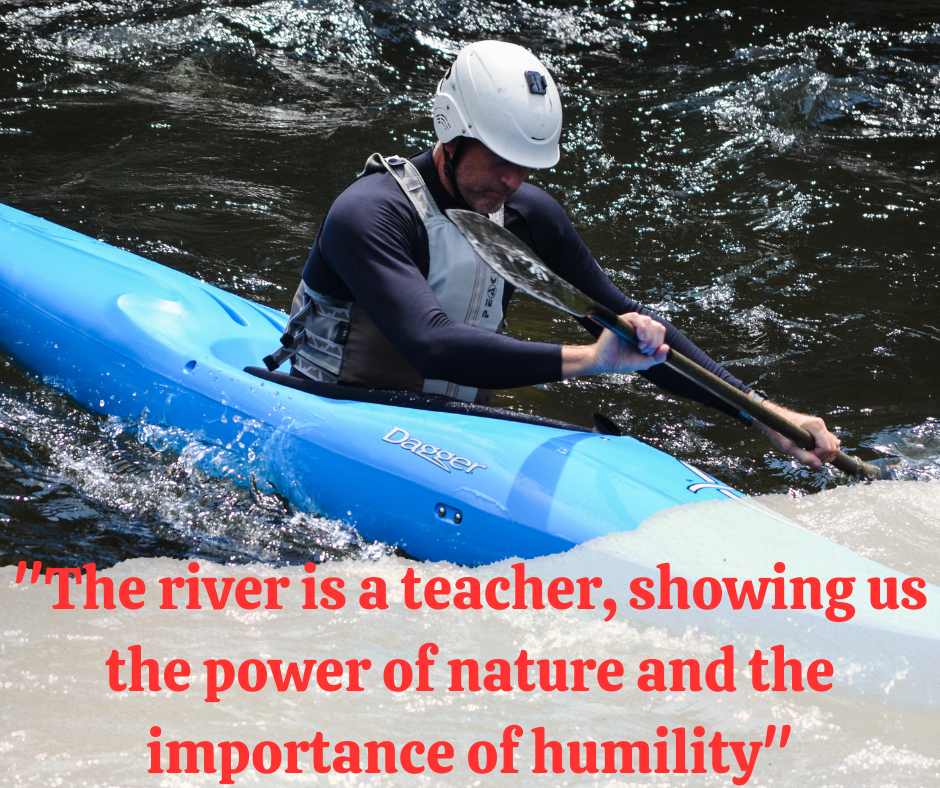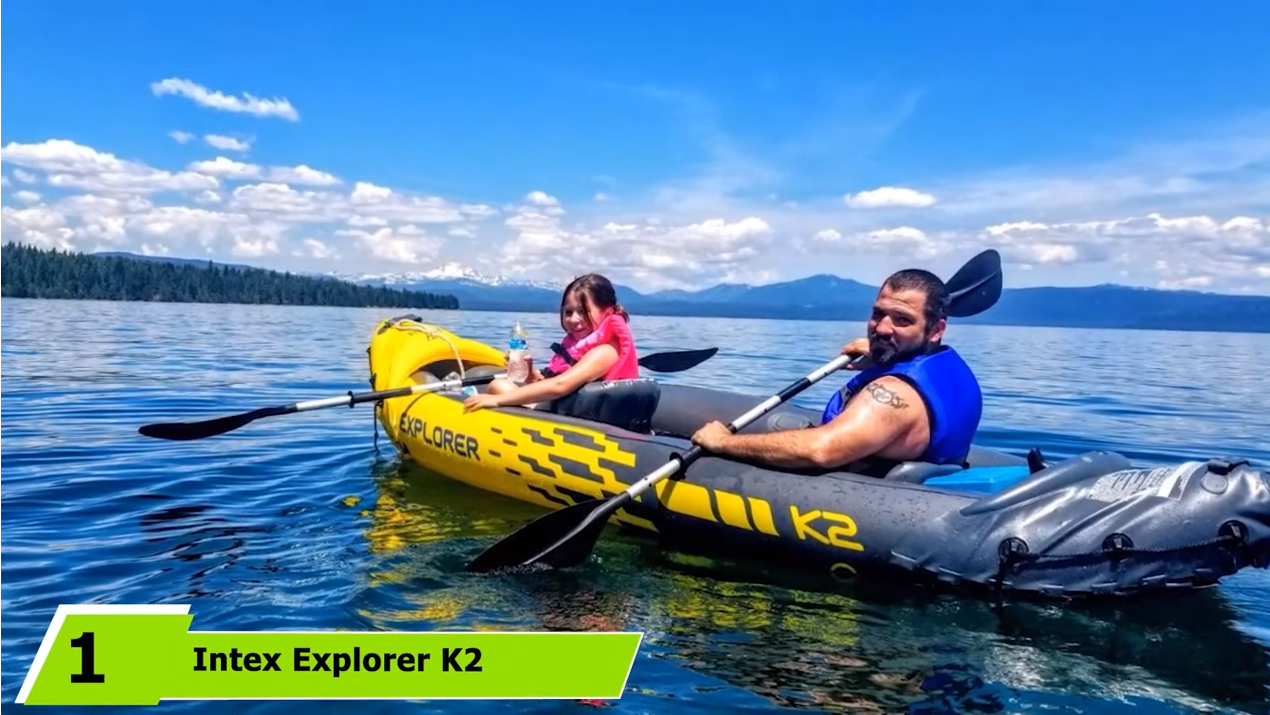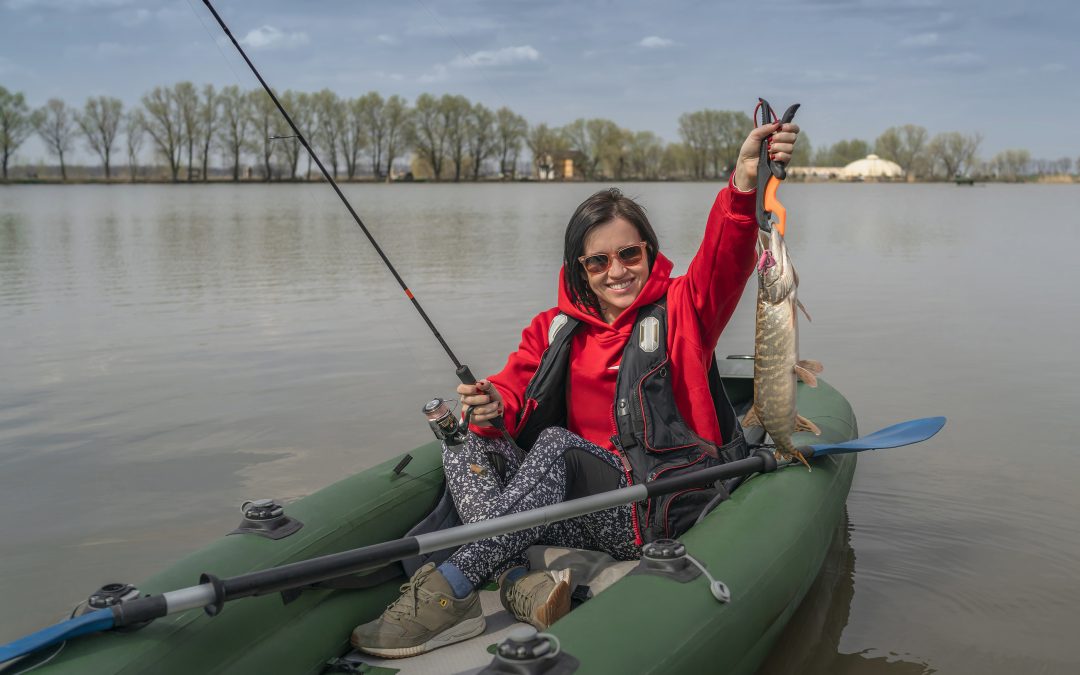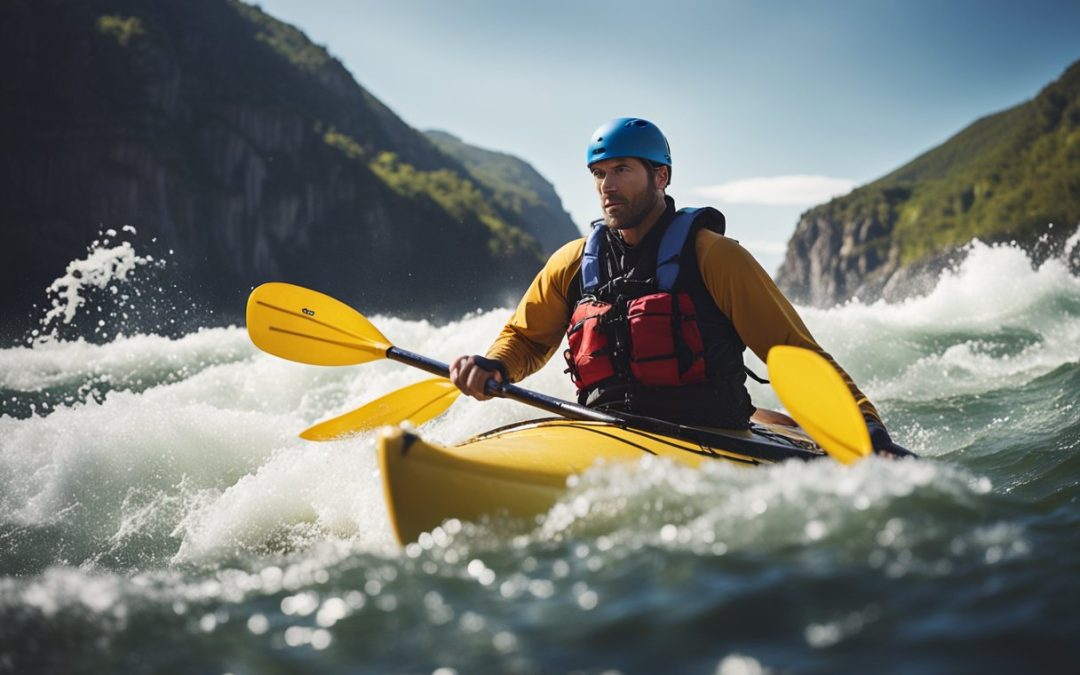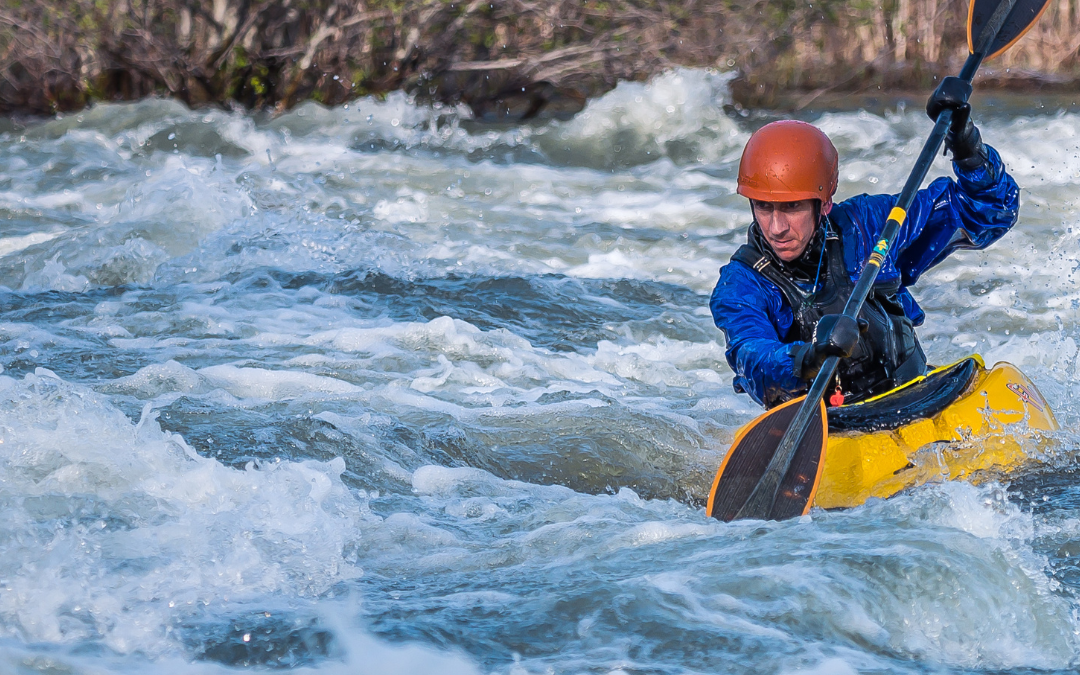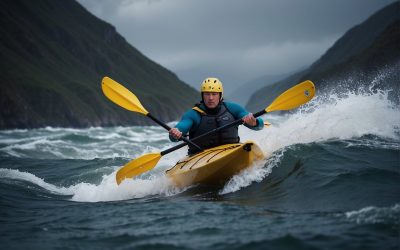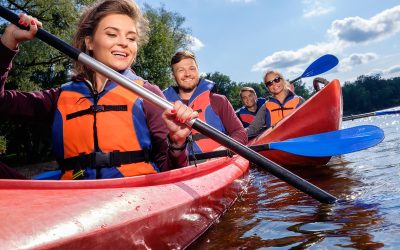Kayaking Tips for Beginners: Everything You Need to Know
Kayaking is an excellent way to experience the beauty of nature while getting a full-body workout. For beginners, kayaking can be intimidating, but anyone can enjoy this fun activity with the right tips and techniques. This article will discuss some essential kayaking tips for beginners to help you start your kayaking journey.
First and foremost, it is essential to understand kayaking and its benefits. Kayaking is a low-impact exercise that works your core, arms, and back muscles. It is an excellent way to relieve stress and connect with nature. Understanding the benefits of kayaking can motivate beginners to take up this activity and enjoy its many perks.
Safety is crucial when it comes to kayaking. Beginners should prioritize safety and take precautions before heading out on the water. This article will discuss some essential safety tips to remember while kayaking. We will also cover kayaking techniques, planning your first kayak trip, maintaining your kayak, and improving your skills.

Key Takeaways
- Kayaking is a low-impact exercise that works your core, arms, and back muscles while connecting you with nature.
- Safety should always be a top priority when kayaking, and beginners should take necessary precautions before heading out on the water.
- Following essential beginner kayaking tips, anyone can enjoy this fun activity while getting a full-body workout.
Understanding Kayaking
Kayaking is a popular water sport that involves paddling a small boat, called a kayak, on a body of water. It can be done on rivers, lakes, or the ocean and is a great way to explore nature while getting exercise. Before getting started with kayaking, beginners should understand the different types of kayaking and the basic equipment needed.
Types of Kayaking
There are several types of kayaking, each with its unique features and equipment. Some of the most common types include:
- Recreational Kayaking: This kayaking is done on calm, flat water like a lake or slow-moving river. Recreational kayaks are typically wider and more stable than other kayaks, making them easier to maneuver for beginners.
- Touring Kayaking: Touring kayaking involves paddling longer distances on open water, such as the ocean or large lakes. Touring kayaks are longer and narrower than recreational kayaks, making them faster and more efficient for longer trips.
- Whitewater Kayaking: Whitewater kayaking is done on fast-moving rivers with rapids and obstacles. Whitewater kayaks are shorter and more maneuverable than other types of kayaks and are designed to handle the rough conditions of whitewater.
Kayaking Equipment Basics
Before getting started with kayaking, beginners should invest in some basic equipment. Here are some of the most important items:
- Kayak: The most important piece of equipment is the kayak itself. Beginners should choose a kayak that is appropriate for the type of kayaking they plan to do.
- Paddle: A paddle is used to propel the kayak through the water. Beginners should choose a paddle with the right length and weight for their height and strength.
- Personal Flotation Device (PFD): A PFD, a life jacket, is essential for kayaking safety. It should fit snugly and be worn at all times while on the water.
- Spray Skirt: A spray skirt is a waterproof cover that covers the kayak’s cockpit, keeping water out of the boat. It is especially important for whitewater kayaking.
- Helmet: A helmet is essential for whitewater kayaking, as it protects the head from rocks and other obstacles in the water.
Overall, understanding the different types of kayaking and the basic equipment needed is essential for beginners to get started with this fun and rewarding sport.
Benefits of Kayaking
Kayaking is a popular water sport that offers a wide range of benefits. Here are some of the key benefits of kayaking:
Physical Benefits
Kayaking is a great way to get some exercise and stay active. It is a low-impact activity that people of all ages and fitness levels can enjoy. Kayaking can help improve cardiovascular health, strengthen core muscles, and tone upper body muscles such as arms, back, shoulders, and chest.
Mental Benefits
Kayaking can also have a positive impact on mental health. Spending time in nature and being out on the water can help reduce stress and anxiety, improve mood, and promote relaxation. It can also provide a sense of accomplishment and boost self-confidence.
Social Benefits
Kayaking can be a great way to connect with others and build relationships. It can be enjoyed alone or with friends and family. Joining a kayaking club or group can be a great way to meet new people with similar interests.
Environmental Benefits
Kayaking can also promote environmental awareness and conservation. It allows people to explore and appreciate natural environments, which can lead to a greater appreciation and desire to protect them. Kayakers can also help monitor and report any environmental concerns they come across while out on the water.
Overall, kayaking is a fun and rewarding activity that offers a range of physical, mental, social, and environmental benefits. It is a great way to stay active, enjoy the outdoors, and connect with others.
Safety First
Kayaking is a fun and exciting activity, but it is important to prioritize safety when out on the water. Before embarking on a kayaking adventure, beginners should familiarize themselves with essential safety gear and weather and water conditions.
Essential Safety Gear
The most important safety gear for kayaking is a personal flotation device (PFD) and a life jacket. A properly fitting PFD should always be worn while kayaking, regardless of the weather or water conditions. It is also important to ensure the PFD is U.S. Coast Guard-approved.
In addition to a PFD, kayakers should consider wearing a spray skirt, especially when the water is rough. A spray skirt helps keep water out of the kayak, preventing capsizing. Other essential safety gear includes a whistle, which can be used to signal for help, and a headlamp or flashlight for kayaking in low-light conditions.
Weather and Water Conditions
Before heading out on a kayaking trip, beginners should check the weather forecast and water conditions. Kayaking in high winds or rough waters can be dangerous, so choosing a day with calm weather and water conditions is important.
Beginners should also be aware of the water temperature and dress accordingly. The water can be cold even on warm days, so wearing appropriate clothing, such as a wetsuit or dry suit, is important. It is also important to protect the skin from the sun by wearing a sun-shielding hat and sunscreen.
In summary, kayaking can be a fun and exciting activity. Still, it is important to prioritize safety. Beginners should always wear a properly fitting PFD, consider other essential safety gear, and check the weather and water conditions before heading out on a kayaking trip.

Kayaking Techniques
Paddling 101
Paddling is the most basic and essential kayaking skill. To paddle effectively, the kayaker should sit upright with their feet on the footrests and knees slightly bent. The paddle should be held with both hands, with the hands shoulder-width apart. The top hand should be placed on the paddle’s shaft, while the bottom should be placed on the paddle’s grip.
The paddling should start with the top hand pushing the paddle forward while the bottom hand pulls it back towards the hip. The blade should be fully submerged in the water and pulled out once it reaches the kayaker’s hip. The kayaker should then repeat the motion on the other side to maintain a straight course.
Maneuvering Tips
Maneuvering the kayak requires a combination of paddling techniques and body movements. To turn left, the kayaker should paddle on the right side of the kayak while leaning towards the left. To turn right, the kayaker should paddle on the left side of the kayak while leaning towards the right.
Another maneuvering technique is the sweep stroke. The sweep stroke turns the kayak while stationary or at slow speeds. To perform the sweep stroke, the kayaker should reach out with their paddle towards the kayak’s bow and sweep it in a wide arc towards the stern.
Lastly, the kayaker should learn how to brace to prevent capsizing. To brace, the kayaker should place their paddle in the water on the side they are leaning towards and press down to stabilize the kayak.
Mastering these basic kayaking techniques will allow beginners to enjoy their kayaking experience safely and confidently.
Planning Your First Kayak Trip
Kayaking is a fun and exciting way to explore the great outdoors. But before you embark on your first kayak trip, planning ahead is important to ensure a safe and enjoyable experience. This section covers some tips for choosing a location and packing the essentials for your first kayak trip.
Choosing a Location
When choosing a location for your first kayak trip, it’s important to consider your skill level and experience. Look for calm, flat waters with minimal current and wind. A lake or pond is a great option for beginners, providing a stable and easy-to-navigate surface.
It’s also important to research the area ahead of time. Check for any potential hazards, such as rocks, rapids, or underwater obstacles. Look for designated kayak launch sites and check if any permits or fees are required.
Packing Essentials
When packing for your first kayak trip, it’s important to bring the essentials to ensure a safe and comfortable experience. Here are some items to consider:
- Personal Flotation Device (PFD): A PFD is necessary for any kayak trip. Make sure it fits properly and is U.S. Coast Guard-approved.
- Kayak paddle: Choose a paddle that is the right length for your height and the type of kayaking you’ll be doing.
- Sun protection: Wear sunscreen, a hat, and sunglasses to protect yourself from the sun’s harmful rays.
- Water and snacks: Staying hydrated and fueled is important for any outdoor activity. Pack plenty of water and snacks to keep your energy up.
- Dry bag: A dry bag will keep your belongings safe and dry in case of splashes or rain.
- Navigation tools: Bring a map, compass, or GPS device to help you navigate.
Following these tips for choosing a location and packing essentials, you’ll be well-prepared for your first kayak trip. Remember always to prioritize safety and enjoy the beautiful scenery around you.
Maintaining Your Kayak
Proper maintenance of your kayak is essential to ensure its longevity and performance. Here are some tips to keep your kayak in top condition:
- Rinse your kayak after each use: Saltwater, sand, and debris can corrode your kayak’s metal components and damage its finish. Rinse your kayak with fresh water after each use and wipe it down with a soft cloth or sponge.
- Store your kayak properly: When not in use, store your kayak in a dry, cool, and shaded area. Avoid storing it in direct sunlight or extreme temperatures, as they can cause the plastic to warp or crack.
- Check for cracks and leaks: Inspect your kayak regularly for cracks, leaks, and other damage. If you notice any issues, repair them immediately to prevent further damage.
- Maintain your kayak’s hardware: Check your kayak’s hardware, including the rudder, skeg, and hatch covers, for signs of wear and tear. Replace any damaged or worn parts to ensure your kayak performs at its best.
- Protect your kayak during transportation: Using a carrier or foam blocks prevents it from shifting or scratching. Secure it tightly to your vehicle using straps or ropes.
Following these simple maintenance tips, you can keep your kayak in great condition for years.
Improving Your Skills
Kayaking is a fun and exciting activity that people of all ages and skill levels can enjoy. However, if you want to take your kayaking to the next level, you’ll need to work on improving your skills. Here are some tips to help you become a better kayaker:
- Take lessons: One of the best ways to improve your kayaking skills is to take lessons from a qualified instructor. They can teach you proper paddling techniques, safety tips, and other important skills to help you become a better kayaker. Look for lessons at your local kayak shop or outdoor recreation center.
- Practice regularly: Like any sport, the more you practice kayaking, the better you’ll become. Try to get out on the water as often as possible, even just for a short paddle around the lake. This will help you build up your endurance and improve your technique.
- Work on your paddling technique: Your paddling technique is one of the most important factors in your kayaking performance. Ensure you’re using the correct paddle grip, keeping your arms straight, and using your torso to power your strokes. Practice different types of strokes, such as the forward stroke, sweep stroke, and draw stroke, to improve your overall technique.
- Learn how to roll: Rolling is used to right a capsized kayak. It’s an essential skill for any kayaker, especially if you plan to paddle in rough water or rapids. Take a rolling class or watch online tutorials to learn how to roll your kayak.
- Join a kayaking club: Joining a kayaking club is a great way to meet other kayakers and learn from experienced paddlers. You can also participate in group paddles and other events that will help you improve your skills.
Following these tips and practicing regularly can improve your kayaking skills and take your paddling to the next level. Remember always to prioritize safety and never paddle beyond your skill level.
Pros and Cons of Kayaking
Kayaking is a great way to explore the outdoors and enjoy nature. However, as with any activity, consider the pros and cons before jumping in.
Pros
- Low-Impact Exercise: Kayaking is a low-impact exercise that people of all ages and fitness levels can enjoy. It is a great way to improve cardiovascular health, build upper body strength, and increase flexibility.
- Accessible: Kayaking can be done on various bodies of water, from calm lakes to rivers. It is a versatile activity that can be enjoyed year-round in many parts of the world.
- Affordable: Compared to other outdoor activities, kayaking can be relatively affordable. Renting a kayak for a day or purchasing a used kayak can be a cost-effective way to enjoy the sport.
- Relaxing: Kayaking can be a great way to unwind and de-stress. The peacefulness of being on the water and the beautiful scenery can be a calming experience.
Cons
- Weather Dependent: Kayaking is heavily dependent on weather conditions. Wind, rain, and cold temperatures can make kayaking uncomfortable or dangerous.
- Equipment: Kayaking requires specialized equipment, including a kayak, paddle, and personal flotation device (PFD). Purchasing or renting this equipment can be expensive, and transporting it can be cumbersome.
- Risk of Injury: As with any outdoor activity, there is a risk of injury associated with kayaking. Potential hazards include capsizing, hitting rocks or other obstacles, and hypothermia.
- Skill Level: Kayaking requires a certain skill and technique to be done safely and effectively. Beginners should take lessons with experienced kayakers to learn proper paddling techniques and safety procedures.
Overall, kayaking can be a fun and rewarding activity for beginners. However, it is important to consider the pros and cons before getting started to ensure a safe and enjoyable experience.
Frequently Asked Questions
What are some common mistakes beginners make when kayaking?
Beginner kayakers often make the mistake of overestimating their abilities and choosing too challenging waters. They may also need to remember to wear a personal flotation device (PFD) or adjust it properly. Another common mistake is not checking the weather forecast before heading out, which can lead to dangerous conditions. Beginners must start with easy, calm waters and gradually work up to more challenging conditions.
What are some essential kayaking skills and techniques for beginners?
For beginners, it is important to learn the basic kayaking strokes, such as the forward stroke, sweep stroke, and draw stroke. They should also practice turning the kayak using a combination of strokes. Learning how to brace and roll the kayak is also important for safety. Additionally, beginners should learn how to properly enter and exit the kayak and adjust their body position for maximum efficiency.
What should beginners wear when kayaking?
Beginners should wear appropriate clothing for the weather conditions and the water temperature. Synthetic materials that dry quickly are recommended, as cotton can become heavy and uncomfortable when wet. A PFD should always be worn, and it is also recommended to wear a spray skirt to keep water out of the kayak. Neoprene footwear is recommended to protect the feet from rocks and other hazards.
What are some important safety tips for beginner kayakers?
Beginner kayakers should always wear a PFD and adjust it properly. They should also know the weather conditions and avoid kayaking in strong winds or thunderstorms. It is important to stay hydrated and bring enough water for the trip. Beginner kayakers should also avoid kayaking alone and inform someone of their plans before heading out.
What equipment do beginner kayakers need?
In addition to a kayak and paddle, beginner kayakers should have a PFD, spray skirt, and appropriate clothing and footwear. It is also recommended to have a bilge pump, paddle float, and rescue whistle in an emergency.
Where is a good place for beginners to learn kayaking, and why?
A calm, shallow lake or pond is a good place for beginners to learn kayaking. These waters are usually free of strong currents and waves, making it easier for beginners to practice basic skills. Instructors or experienced kayakers can also provide guidance and support in these environments.




